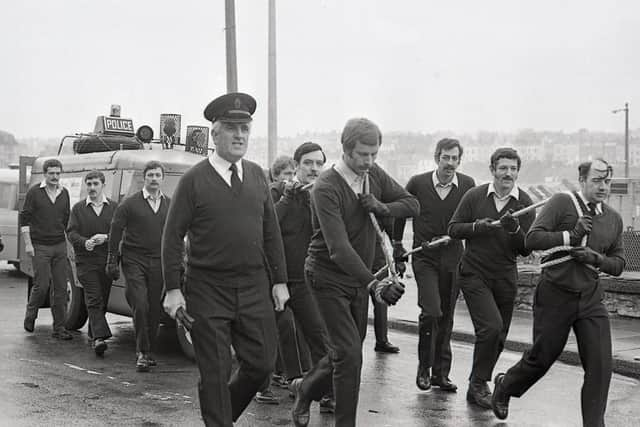THROUGH THE ARCHIVES: From the News Letter of January 1871
and live on Freeview channel 276
The remains of the deceased Sir William Verner, Baronet, who had for “so long and so worthily” filled the officer of Member of Parliament for Armagh, Grand Juror for Armagh and Tyrone, and County Grand Master of the Orangemen of Armagh, was to be interred in the family vault at Loughgall, reported the News Letter in January 1871. Sir William had died at Eaton Square, London on January 20. He had a remarkable life and had been injured during the Battle of Waterloo.
The News Letter noted: “According to the present arrangements, the remains will be conveyed from Belfast by the Ulster Railway, so as to arrive at Armagh station at 10.30am on that morning [Friday, January 27, 1871].”
Advertisement
Hide AdAdvertisement
Hide AdThe cortege was then to proceed from Armagh immediately after the arrival of the train, and the Armagh Town Commissioners, gentry, and Orangemen of the county would then accompany the remains of Sir William to their last resting place.


The News Letter noted: “We observe by a notification of Edward Rogers, Esq, County Grand Secretary, as the organ of the Grand Lodge, that there will no party procession.”
The paper concluded: “The funeral will be one of the largest ever held in the county, as the deceased was esteemed by all classes for his many private virtues, and for the services he rendered the kingdom as a soldier and a citizen.”
Grand concert held at Downpatrick
On Thursday, January 19, 1871, Mr J H Carroll, the organist of Down Cathedral, had given his annual concert in the Lecture Room of the Young Men’s Christian Association, to a “crowded and fashionable audience”, which included “the elite of town and country”.


Advertisement
Hide AdAdvertisement
Hide AdMr Carroll was assisted by the Misses Richardson of Belfast, Mr Wallace, bandmaster of the South Down Militia, and the principal members of the Down Cathedral Choir.
The News Letter noted that the vocal music in the programme has been “select and varied”, containing solos, duets, quartets, and part songs by Mendelssohn, Balfe, Barnby all of which had been “rendered with precision and correct expression”.
During the evening the Misses Brown (“pupils of Mr Carroll, but twelve years of age”) performed two pianoforte, A Midsummer Night’s Dream by Mendelssohn and Qui Vive Galop by Ganz, “in a manner which delighted the large assembly”.